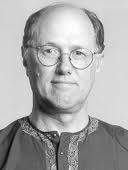National Day of Prayer – Is it Constitutional? by George Wolfe
In 2003, the National Day of Prayer was surrounded by controversy in Muncie, Indiana. That was the year the Chicago Tribune ran an article on April 27th featuring Unitarian Universalist minister Thomas Perchlik and his effort to make the National Day of Prayer observance an inclusive event.
A local minister had organized a National Day of Prayer observance at City Hall each year. His efforts, however, had invited exclusively Christian participants. Rev. Perchlik wanted to open up the observance to include all faiths, including secular humanists who place primary emphasis on science and reason.
A National Day of Prayer was first observed in 1775 at the second Continental Congress. In February of 1982, President Ronald Reagan rekindled the holiday by declaring May 6 of that year a day on which Americans “join with me in giving thanks to Almighty God for the blessings He has bestowed on this land. . . .”
According to Reagan’s proclamation, 30 years prior, “a Joint Resolution of the Congress requested the President to proclaim a day each year, other than a Sunday, as a National Day of Prayer, on which the people of the United States may turn to God in prayer and meditation in places of worship, in groups, and as individuals. Eight Presidents since then have annually proclaimed a Day of Prayer to the nation, resuming the tradition started by the Continental Congress.” Since then, the first Thursday in May has been traditionally set aside as the American “National Day of Prayer.”
But the question inevitably arises, “Is the National Day of Prayer Constitutional? Does it violate the separation of church and state?” The issue is akin to controversies that have surfaced regarding displaying the Ten Commandments on government property.
In June of 2004, I met with Mayor Dan Canan, explaining that I had devised a way the Ten Commandments could be displayed on government property without violating the guidelines established by the United States Supreme Court.
The display presented five of the more prominent listings of ethical teachings derived from religion and secular humanism. Along side the Ten Commandments were documents representing Hindu philosophy, the Buddhist Eight-fold Path, the Seven Humanist Principles of Unitarian Universalism, and a shortened version of the United Nations Declaration of Human Rights.
The reason why the Ten Commandments could be displayed on public property in this context without violating the separation of church and state is that the exhibit fulfills two requirements set forth by the U.S. Supreme Court, these being (1) that the display not favor one religion over another, and (2) that it not promote religion over humanism or non-religious viewpoints. Mayor Canan allowed my display to be exhibited in City Hall for a month after our meeting.
Taking the same approach to the National Day of Prayer can provide a means whereby open-minded people of different faiths and philosophical traditions come together in the spirit of cooperation for the good of our community and our nation. All that is necessary is that multiple wisdom traditions be represented in the expression of tributes given by humanists as well as by prominent religions leaders in our community.
My display of ethical teachings illustrated a particular way the great world religions and philosophical traditions have contributed to what I call the “collective wisdom of humanity.” It is our duty as educated world citizens to appreciate the contribution each of these traditions has made to the ethical and philosophical teachings that comprise this collective wisdom.
Rather than ridicule and belittle someone who values and has benefited from a tradition other than our own, let us join together on May 5th with open minds and hearts in an inclusive spirit. Let us broaden our understanding each other and derive deeper meaning from those great philosophers and spiritual teachers who have served as guiding lights in what otherwise appears to be a world plagued by darkness.
George Wolfe is Professor Emeritus and former director of the Ball State University Center for Peace and Conflict Studies. He also chairs the Muncie Interfaith Fellowship, is a trained mediator, and the author of The Spiritual Power of Nonviolence: Interfaith Understanding for a Future Without War.



